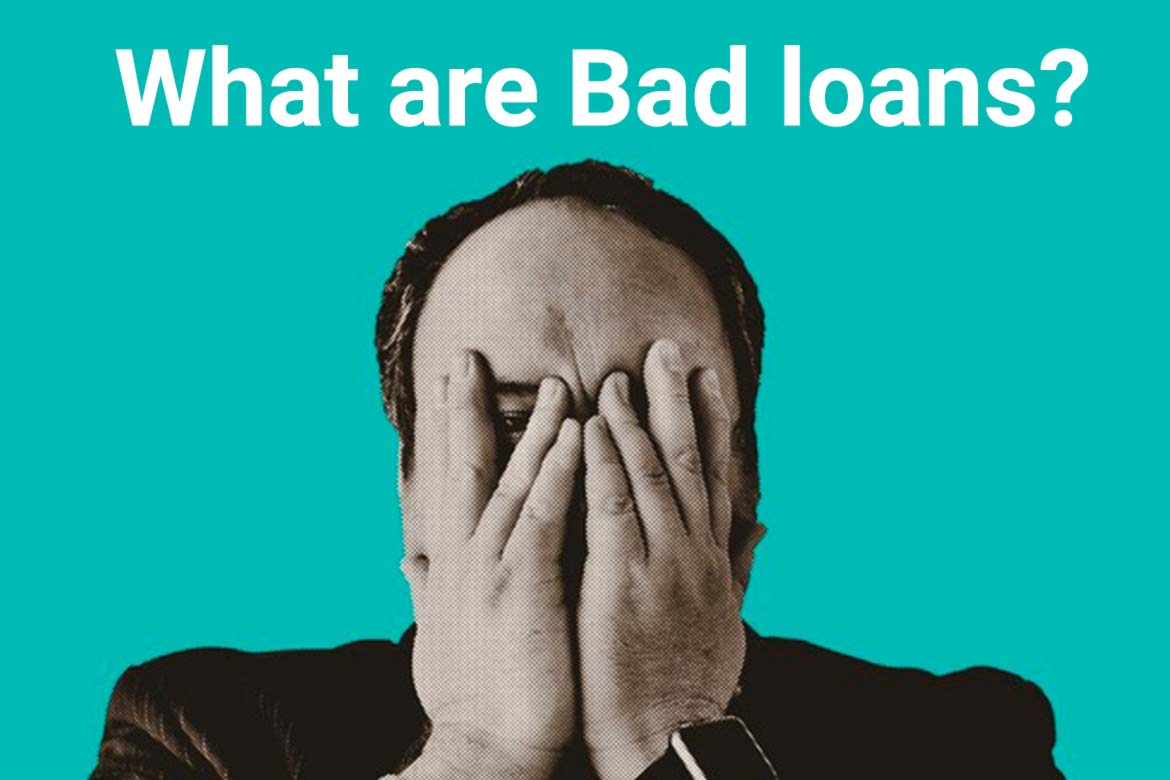A robust Finance or credit culture is essential for the proper functioning of any economy. A healthy banking ecosystem is an indicator of a strong economy. Banks and borrowers have a symbiotic relationship, but when some borrowers wilfully default on loans then it creates a series of problems. In this article, we will understand about such bad loans and how they affect the economy.
What is a bad loan?
Such loans where the repayment of the loans taken is not done as per the pre-agreed agreement between the borrower and the creditor and which are never repaid are called Bad Loans.
When a person takes a loan and does not repay it, the bank includes the loan given to him in the category of ‘bad loan’. If the person’s loan is kept in the category of ‘bad loans’ and he wants to take a new loan, then he won’t be able to borrow money easily.
Bad loans are a burden for any economy. They make the country’s banking system sick. Bad loans reduce the dividend of the banks, as a result, it becomes difficult for the bank to give loans. When it becomes difficult for banks to lend, then investment starts falling and when the investment starts falling, then there is an adverse effect on the growth rate of the economy.
A bad loan could be compared with a wild elephant because managing it is a very difficult task, the more we try to control it, the more it becomes uncontrollable. For instance, a bank has given a loan to a company, when the bank gave the loan, the circumstances were favourable and the company was in the position to repay the loan amount. But later the company was unable to repay the loan due to adverse conditions. If the bank gives the company more loans to get out of financial troubles, then there is a constant fear that the loan given later may also get sunk.

Also read: Investors’ Guide: What Is The Money Market And The Capital Market? Know The Difference Here
Challenges that banks face:
Recovering loans through the confiscation of assets is often not beneficial for the banks as the confiscated assets often have to be sold at a lower price which is much lower than the amount given. The Strategic Debt Restructuring in India has is not so smooth, the reason being that the public sector banks of India do not have any experience in managing companies and it is a difficult task for them to manage the companies better.
There are two problems with the restructuring of bad loans. The first is that bank managers may illegally undervalue the non-performing assets of some companies so that they can make illegal profits. The second problem is that if the non-performing assets are sold at a discount rate, it will directly adversely affect the dividends of the banks.
Steps taken to tackle this problem:
To address the growing problem of bad loans, the Reserve Bank of India had launched the Strategic Debt Restructuring (SDR) scheme. Under SDR, if a company or institution is unable to repay the loan, then banks can play a big role in the management of that defaulting company. Even banks can change the promoters of the company under the SDR scheme. Banks can also restructure bad loans to make it a little easier for creditors to repay loans. Banks can also repay their own debt by selling non-performing assets to asset reconstruction companies at a discount.
In order to address the high NPAs, the Government of India has set up two new entities to acquire ‘stressed assets’ from banks and then sell them in the market. These two entities are:
- National Asset Reconstruction Company Limited( NARCL) is incorporated under the Companies Act and applied to the Reserve Bank of India for a license as an Asset Reconstruction Company (ARC). NARCL will acquire stressed assets of about Rs 2 lakh crore from various commercial banks in various phases. Public Sector Banks (PSBs) will retain 51% ownership in NARCL.
- India Debt Resolution Company Limited’ (IDRCL) is another entity thatwill try to sell stressed assets in the market. PSBs and Public Financial Institutions will have a maximum stake of 49% in IDRCL. The remaining 51% stake will be held by private sector lenders.
Read more: What are Digital or Neo Banks? Why you should opt for Neo Banking?

1 comment
Nice